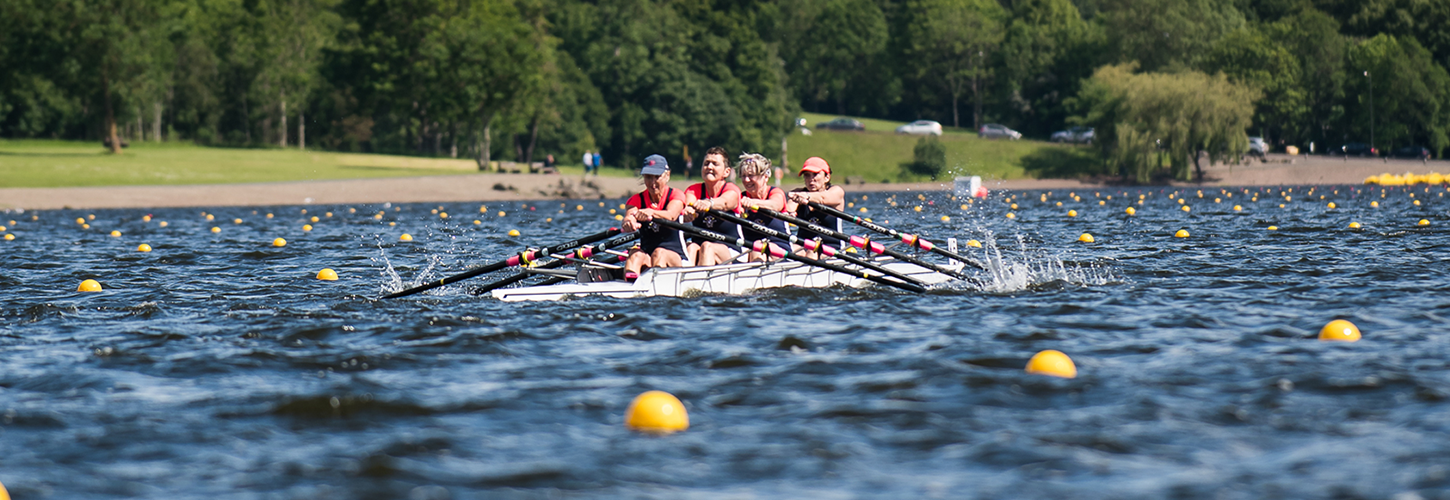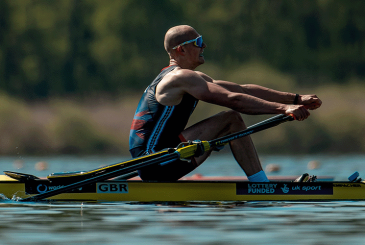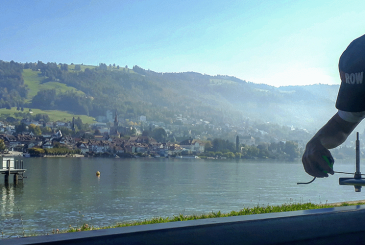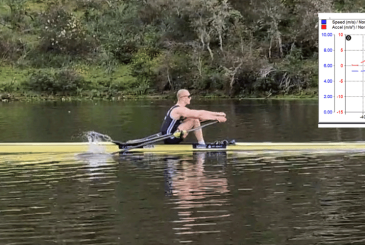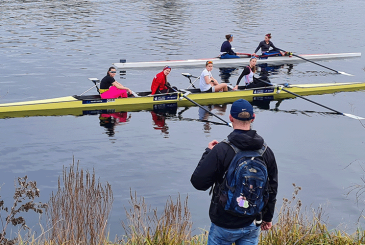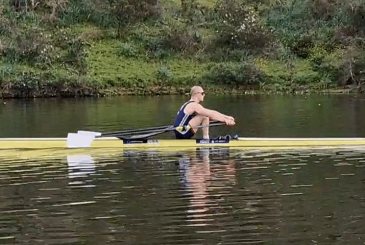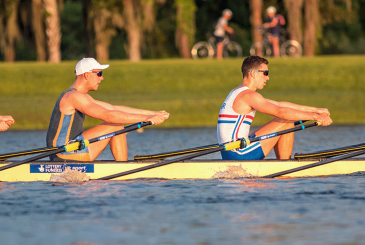Racing in a tail-wind can make the boat faster, but only if you can move well enough. Coach consultant Robin Williams explains how
Being an outdoor sport we have to take the weather as it comes, and there’s no point in complaining about it. Nevertheless, we all hope to catch that magical race performance when you do a record time and win in perfect conditions – a personal best moment. If it’s too windy it can become unhelpful – the water becomes choppy and the hull goes so fast you can’t keep up with your own speed – but if you can get it right, you can produce incredible times.
The 2006 Worlds at Dorney produced such conditions, and some interesting racing ensued. The lightweight men’s single sticks in my mind because it was won by our own Zac Purchase, and also because he set a world best time of 6:47.82. While the bigger boats went happily through the water, Zac’s racing was impressive in a light single which was being bumped around by the tricky conditions. So, how do you cope with tail-winds?
Apparent wind
The first thing is to appreciate the effect of the wind on your hull speed. The ‘apparent wind’ when rowing into a head-wind means it feels windier than it actually is, but at least things are slower and heavier, so it is relatively easy to feel the load on the blade and then feel how to lever against it. In tail conditions, the apparent wind disappears so it feels like there’s no wind at all. The boat is fast, the load is less, you get less balance from the blades and it is altogether harder to control your body mass. This means a lot of energy can get wasted on the changes of direction.
The first thing is to appreciate the effect of the wind on your hull speed
Hull speed
To avoid over-shooting the front end and falling off the back end in a tail-wind, you are going to need good skills around the catch and finish if you are going to ‘stay with the boat’. To illustrate the issue, let’s imagine we’re in a boat travelling at five metres per second (or 6’40” pace for 2,000m). Let’s invent a target of making our entry and catch in 0.2 seconds, which sounds pretty quick; however, the boat will have travelled forwards one metre in that small time and actually it would look like a pretty sloppy beginning to the stroke. Even if that ‘slack’ time were 0.1 second the boat still goes half a metre. That gives some idea of the timing and precision required to get a good beginning to the stroke.
A tail-wind will add to this challenge as the hull might easily move an extra five to 10cm in the same time interval. At the finish, your ‘exit window’ is smaller too because the water will fill in the void behind the spoon more quickly and the fast-moving handle may well thump your body, and make an abrupt and erratic path around the finish turn. All this unwanted movement and lack of control over your momentum will clearly be bad for rhythm, so we can easily imagine how some crews may actually end up no quicker in tail-winds than in flat conditions – just because they can’t keep up or move well enough.
Curing the problem
Before you even get into the boat, try the ergo: drop the damper down low and see what’s it’s like to work against a lower resistance. This mimics a tail-wind quite well and if you raise the stroke rate you will soon see that you have to stay on your toes at the front to avoid over-compressing and collapsing your torso, while also having a fast-arm draw at the finish to avoid going off balance and opening too much.
The same is true in the boat and the key is to catch well. If you can get the pressure in the first place then there’s a good chance you can keep it in the spoon all the way through. Good drills for this are doing short slide work with rate lifts. Try quarter, half and three-quarters slide – because your mass isn’t going too far forwards, you stay on balance more easily, so you can practise catching faster before venturing fully forwards.
Before you even get into the boat, try the ergo: drop the damper down low and see what’s it’s like to work against a lower resistance
Equally well, legs-only rowing from front stops is good because the torso is still and the feet can get a feel for the speed against the spoon before you add in the trunk, then the arms. The drive phase has high force initially, which translates into power as the hull accelerates. In head-winds the initial force is higher so the acceleration comes a little later. In tail-winds the force is lower and the acceleration comes sooner, so don’t be afraid to turn the power on in fast conditions.
The legs, trunk and arms all move faster and the finish pressure needs to be made slightly earlier too. If you do this you can actually soften the last inch of handle movement and avoid banging your body or ripping the finish.
Half-arm finishes are good for promoting high power without over-drawing, but I am not advocating rowing short permanently!
6 tail-wind tips
- Good shape in the recovery helps to avoid hitting any waves off the release and allows a clean profile at the entry.
- Keep things horizontal during the drive – a low centre of effort, in the legs and lower trunk. Lifting in the shoulders means your oar will ‘scoop’ the water.
- Some people move the stretcher a half to one centimetre to the stern to help the initial lock on the oar and reduce tearing.
- Others also put the feet height up a hole to create more horizontal drive. Remember that going up one hole also moves you towards the stern by half a centimetre because of the stretcher slope.
- Adding a half to one centimetere on the oar’s outboard is also an option if the crew cannot ‘get hold of the work’.
- If you do clip the water – be philosophical about it; so will everyone else, but if you recover from your mistakes better then you still have the advantage!
This article originally appeared in Rowing & Regatta magazine in May 2012.
Photo: Rob Eyton-Jones/Scottish Rowing


